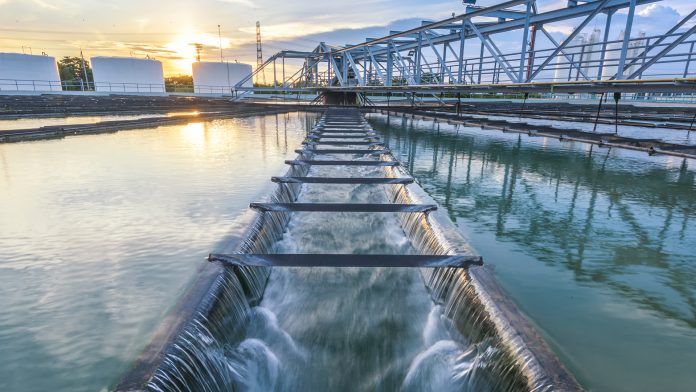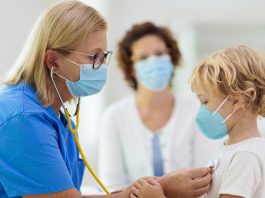The National Wastewater Epidemiology Surveillance Programme is working to develop a standardised UK-wide system for detecting coronavirus in wastewater in order to provide an early warning system for COVID-19 outbreaks.
The National Wastewater Epidemiology Surveillance Programme (N-WESP), led by the UK Centre for Ecology & Hydrology (UKCEH), brings together scientists from the universities of Bangor, Bath, Edinburgh, Cranfield, Lancaster, Newcastle, Oxford, and Sheffield, plus the London School of Hygiene & Tropical Medicine. The £1m research programme, which began in July and will run until October 2021, is funded by the Natural Environment Research Council (NERC), as part of UK Research and Innovation’s response to the recent pandemic. The programme suggests that detecting coronavirus in wastewater could provide an early warning system for COVID-19 outbreaks.
It is focused on assessing whether the analysis of wastewater can be used to estimate the number of COVID-19 cases in a population, as well as investigating the infection risk of SARS-CoV-2– the virus that causes the COVID-19 disease – in sewage.
The majority of people infected with SARS-CoV-2 are believed to shed the virus in their faeces, even if they are asymptomatic, so sewage surveillance can provide a useful tool for identifying future virus hotspots.
The N-WESP team is developing the technical sampling, analytical and modelling methods to assist the government-led national wastewater surveillance programmes in England, Scotland and Wales (see box out).
Dr Andrew Singer of UKCEH is principal investigator of N-WESP. He talks to the Innovation Platform’s Managing Editor Michelle Gordon about the testing process and how wastewater could effectively become the ‘canary in the coal mine’ for COVID-19 and other emerging infectious diseases.
What are the ultimate aims and objectives of the national COVID-19 wastewater epidemiology surveillance programme?
The aim of the national surveillance programmes is to provide surveillance data on the amount of virus that is found in wastewater so as to estimate the number of COVID-19 cases in a particular area. The national COVID-19 wastewater epidemiology surveillance programme (N-WESP) was developed in parallel to these programmes to come up with a method for conducting these tests and collecting, transporting, extracting, and analysing the samples.
Once you analyse a sample, effectively, what you are left with is the amount of virus or viral particles within a volume of wastewater, and once you have that, you are left with the challenge of relating it to the number of cases of COVID-19 within the catchment area from which that wastewater came, which is the epidemiological modelling.
The project is also looking at wastewater modelling. The virus sheds in people’s faeces and when a toilet is flushed, the amount of time that the faeces takes to travel through pipes to the sewage works can vary between 10 minutes and four hours, depending on the area. So, having an understanding of how much of the virus is basically lost in the process of going through the sewage system will very much impact on the amount of virus that is being counted. This ties into the epidemiological modelling because you need to know whether the amount of virus that is being recovered is only a fraction of the amount that was released by people, or if it is the majority of the virus that was released. If it is 90% of the amount, then it is probably a one-to-one relationship, if it is 0.1%, then you have to convert and account for that in the modelling.
The final part of the project is focused on whether the virus that is received at a sewage works is infectious. Obviously, there are a lot of other pathogens in wastewater. We therefore ask if sewage workers took the normal safety precautions, whether that would that be sufficient to protect them from the virus. Furthermore, a significant amount of sewage goes untreated directly into rivers.
There are four groups within the UK working on that question and, at present, they have not generated any data that says that there is an infectious virus. Earlier in the year, the World Health Organization said that there was no evidence of an infectious virus in wastewater. Yet, what they actually meant was that nobody had done any research to find out if there was any evidence.
While the SARS-CoV-2 virus is present in sewage almost ubiquitously, it is very easily damaged by the chemistry and biology that is present in sewage, and so although you can find it there, it is very unlikely that it will be demonstrated to be infectious. So far, no one has come out with any evidence or a study saying that sewage workers are disproportionately affected by COVID, and you would expect something like that to happen if it was highly infectious in sewage. Perhaps the fact that we don’t have a forest fire that needs putting out is an indication that COVID or SARS is not an infectious virus when it has been transported in wastewater for a period of time.
Are you linking up with other researchers in this field across the UK?
There are 10 members of the N-WESP team within the UK, and each of those has somewhere between three and six people working on the project. There is also another team testing wastewater from schools (which I am also a part of). As such, in the UK we have quite a lot of people working on this topic. Internationally, there are probably about 100 different teams working on COVID surveillance and there are many mechanisms for us to communicate to each other, which we use regularly.
It is quite a unique experience to work on this topic because everyone is very focused on delivering the best protocol possible in the shortest period of time so that the surveillance can actually get off the ground and potentially start informing policy decisions.
How is your research informing the UK national surveillance programmes?
In some ways, it is inseparable. The English, Welsh, and Scottish programmes are all slightly different from each other, but there is always a member of the N-WESP team who is quite central in guiding the decisions that are to be taken and built upon.
We are not identical because, obviously, the national programmes are run by the national government; but it was our job to make sure they had protocols up and running as quickly as possible to do it. One of the most significant inputs that we can have at this point in time is to see whether we can get the analytical side of things, from sample acquisition to data provision, down from three days to maybe 24 hours, or even shorter. Of course, the quicker we can provide data, the quicker the responses that can be made by those in policy to say something needs to happen in an area, or that a lockdown can be lifted because the wastewater analysis has shown that the case rate is below a certain threshold.
What can testing sewage tell you that medical testing cannot?
The best example of this is what is currently happening in Liverpool. We were sampling wastewater there and were able to say that there was a very significant rise in COVID-19 cases over an extended period of time. Widespread testing has now taken place in Liverpool, which validates the degree to which people are indeed infected, but we didn’t need to go in and test 800,000 people to make that determination, it could have come from a series of wastewater samples over several consecutive days. That would have given the confidence to say that there was definitely a trend, that cases were increasing, and perhaps that the incidences had gone over a particular threshold. That requires very little in the way of logistics and comparatively little cost, and it can also be done very quickly.
If you have a good understanding of the wastewater modelling element, and what is happening in the pipe, and you have confidence about the data, then it is extremely strong evidence of whether a place is in either a healthy state or a sick state. Without wastewater sampling you either don’t know anything, or you would have to go in and sample a very high number of people to know what is going on. Those two extremes are just night and day when it comes to cost and staffing needs.
Furthermore, wastewater testing has the added benefit of giving an insight into the asymptomatic. Currently, we rely on people to self-report as being sick. However, if a person does not feel sick then they are unlikely to present at a clinic unless, of course, random testing (such as was taking place in Liverpool) was happening, but they would be shedding the virus and they would be infectious. Wastewater surveillance provides an unbiased insight into a population’s health status.
What have been the most significant findings so far?
It has been working really well in some places but not so well in others. The reasons behind that probably lie in one of two areas.
The first concerns the unseen world of the sewage network. Some sewage networks are incredibly complicated, containing pumps and storage tanks and involving long transit times, which affect what is happening in the wastewater system. Where the sewage systems are complicated, the data is almost always much more difficult to interpret.
The second area of complexity is that people move around. You can have a large group of people, out of which maybe five have coronavirus. Those people go to a restaurant in a small town and use the toilet and that waste goes to the sewage works. It is then reported from the sewage works that there is an outbreak in the town, but none of the residents have the virus because those people have moved on. Those kinds of blips are explained by people moving around, passing through an area, or going to work and coming home again.
This kind of thing complicates the analysis, but the fact that we are gaining a better understanding as to the factors that probably contribute to the data not making sense is a really useful step forward. So hopefully, over time, and with the co-operation of the water companies, we can get a better sense of how to interpret that kind of data, and then we will have fewer sewage works producing data that we cannot understand.
How will the intelligence that you are gathering help to prevent or manage the spread of COVID-19 in the future? And how will it be used to support health authorities to plan?
By having this very rapid and comprehensive unbiased sampling of a population, you can very quickly assess whether there is something to worry about in a population. If nothing was found during the wastewater sampling, that does not mean that there is nothing there; it means that the population is likely to have a low rate of infection.
We live in a world where there are a finite number of resources and so if you find nothing in one location, it does not warrant the resources to go in and test the population. Those resources are perhaps better spent in places where you know there is a problem. So, by having this broad national scale surveillance, you can identify the areas that are clearly demonstrating an increasing trend in COVID cases and so prioritise them.
Near-source tracking (NST) involves recovering samples of wastewater near a building such as a care home, school, or hospital. By sampling near to the source, it is possible to identify, in theory, whether there is anything to worry about within that building. It is most effectively being carried out to identify the presence of the virus in student halls as because many young people do not present with acute symptoms; they are therefore more likely to go unnoticed. Early morning wastewater sampling, however, conducted at a time when most residents will be getting up for the day and using the bathroom, can shed light on whether anyone in the building has COVID-19.
Defra, the Environment Agency, and the Joint Biosecurity Centre (JBC) are collaborating on the English national wastewater surveillance programme and chairing a UK-wide group to ensure co-ordination between it and the Scottish Government, the Welsh Government, and academic projects.
The programme, which was first announced in June, has now proven that fragments of genetic material from the virus can be detected in wastewater, which can indicate where a local community or an institution is experiencing a spike in cases.
The results can provide local health professionals with a clearer picture of infection rates by identifying where there are high numbers, particularly for asymptomatic carriers, allowing local authorities to take early action to slow the spread of the virus. The data will also be shared with NHS Test and Trace. As a result, public health professionals can speak directly to institutions where there may be spikes in infection and they can in turn encourage people to get tested or take extra precautions.
Testing, led by the Environment Agency’s Starcross laboratory in Exeter, has been rolled out across more than 90 wastewater treatment sites in the UK, covering approximately 22% of the population in England, with plans to expand in the future.
The JBC is also conducting pilots to test how this approach can generate targeted scientific intelligence to help health authorities make future decisions, including assessing how precisely wastewater can be used to identify coronavirus sources.
Health and Social Care Secretary Matt Hancock said: “This initiative is just one example of how we are working across government and with local partners to find innovative, new ways to track the outbreak, slow the spread of the virus and save lives.
“Monitoring and sampling wastewater offers another tool to help us identify outbreaks early on – helping NHS Test and Trace and local authorities target hotspots quickly and effectively.”
Dr Andrew Singer
UK Centre for Ecology & Hydrology
N-WESP
acsi@ceh.ac.uk
www.ceh.ac.uk
http://nwesp.ceh.ac.uk/partner
Please note, this article will also appear in the fourth edition of our new quarterly publication.









